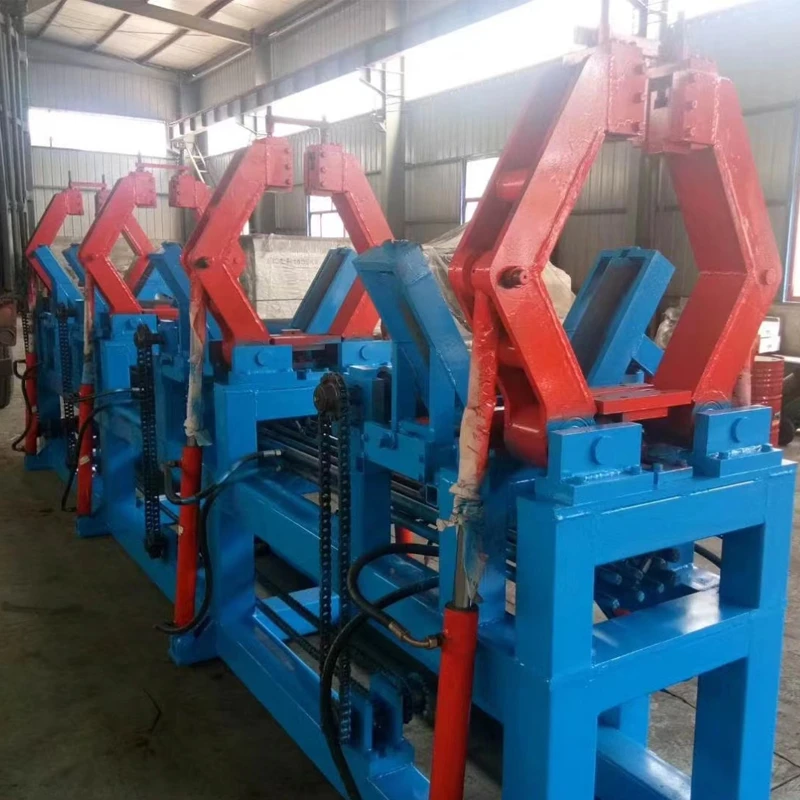high frequency induction welding machine
High Frequency Induction Welding Machine An Overview
High frequency induction welding (HFIW) is a cutting-edge technology that is transforming the metal joining industry. This welding method utilizes high-frequency electromagnetic fields to generate heat in conductive materials, resulting in efficient and precise welds. This article aims to explore the workings, benefits, and applications of high frequency induction welding machines.
How It Works
At the core of high frequency induction welding is an induction coil, which is energized by a high-frequency power supply. When an alternating current flows through the coil, it creates an oscillating magnetic field around it. When a conductive metal, such as steel or aluminum, is placed within this field, electric currents, called eddy currents, are induced within the material. These currents flow towards the surface and generate heat due to the material's electrical resistance.
As the temperature rises, the metal reaches its melting point, allowing it to fuse with neighboring pieces or undergo a solid-state transformation. The entire process is controlled by adjusting parameters such as frequency, power input, and the distance from the coil to the workpiece. The result is a rapid, localized heat generation that allows for efficient welding without the need for additional filler materials.
Advantages of High Frequency Induction Welding
1. Speed and Efficiency One of the most significant advantages of high frequency induction welding is its fast welding cycle. The quick heating and cooling reduce overall production time, making it ideal for high-volume manufacturing.
2. Precision The ability to control the heating zone closely allows for high-quality welds with minimal thermal distortion. This precision is particularly beneficial for industries requiring exact tolerances, such as aerospace and automotive manufacturing.
3. Energy Efficiency High frequency induction welding machines are more energy-efficient compared to traditional welding methods. The direct heating of the materials and reduced waste heat contribute to lower operational costs.
4. Cleaner Process Unlike arc welding, which can produce smoke and fumes, induction welding is a cleaner process that minimizes contamination. This is particularly important in industries where cleanliness is paramount, such as food production and medical equipment.
high frequency induction welding machine

5. Versatility HFIW can be applied to a wide range of materials, including ferrous and non-ferrous metals. This versatility opens up possibilities for various applications across multiple sectors.
Applications of High Frequency Induction Welding
High frequency induction welding machines find application in several industries due to their unique benefits.
- Automotive Industry Induction welding is widely used for joining pipes and tubes in exhaust systems and fuel lines. The durability and strength of these welds are essential for safety and performance.
- Aerospace The aerospace sector employs high frequency induction welding for components where precision and reliability are non-negotiable. Fuel lines, structural components, and part assemblies benefit from the clean and strong welds produced by this technology.
- Construction In construction, induction welding is used for the fabrication of structural steel components, ensuring they meet high safety standards while also considering efficiency in assembly.
- Tube and Pipe Manufacturing Induction welding is a preferred method for manufacturing tubes and pipes, as it allows for continuous production with consistent quality across large batches.
Conclusion
High frequency induction welding machines represent a significant advancement in welding technology, offering numerous benefits that cater to modern manufacturing needs. Their speed, precision, energy efficiency, and versatility make them an attractive option for various industries, from automotive to aerospace. As this technology continues to evolve and improve, it promises to redefine standards in metal fabrication and repair, solidifying its place as an essential tool in the toolbox of modern engineers and manufacturers. With ongoing research and development, the future of high frequency induction welding looks bright, paving the way for even more innovative applications and practices.
-
High Frequency Straight Seam Welded Pipe Production Line-BzZhou Xinghua Machinery Equipment Manufacturing Co., LTD.|line pipe steel&welded gas pipeNewsJul.30,2025
-
High Frequency Straight Seam Welded Pipe Production Line-BzZhou Xinghua Machinery Equipment Manufacturing Co., LTD.|High Precision&Automated SolutionsNewsJul.30,2025
-
High Frequency Straight Seam Welded Pipe Production Line - BzZhou Xinghua Machinery Equipment Manufacturing Co., Ltd.NewsJul.30,2025
-
High Frequency Straight Seam Welded Pipe Production Line-BzZhou Xinghua Machinery Equipment Manufacturing Co., LTD.|Precision Welding, High EfficiencyNewsJul.30,2025
-
High Frequency Straight Seam Welded Pipe Production Line|BzZhou Xinghua|Precision Welding&EfficiencyNewsJul.30,2025
-
High Frequency Straight Seam Welded Pipe Production Line - BzZhou Xinghua|Precision Engineering&EfficiencyNewsJul.30,2025


